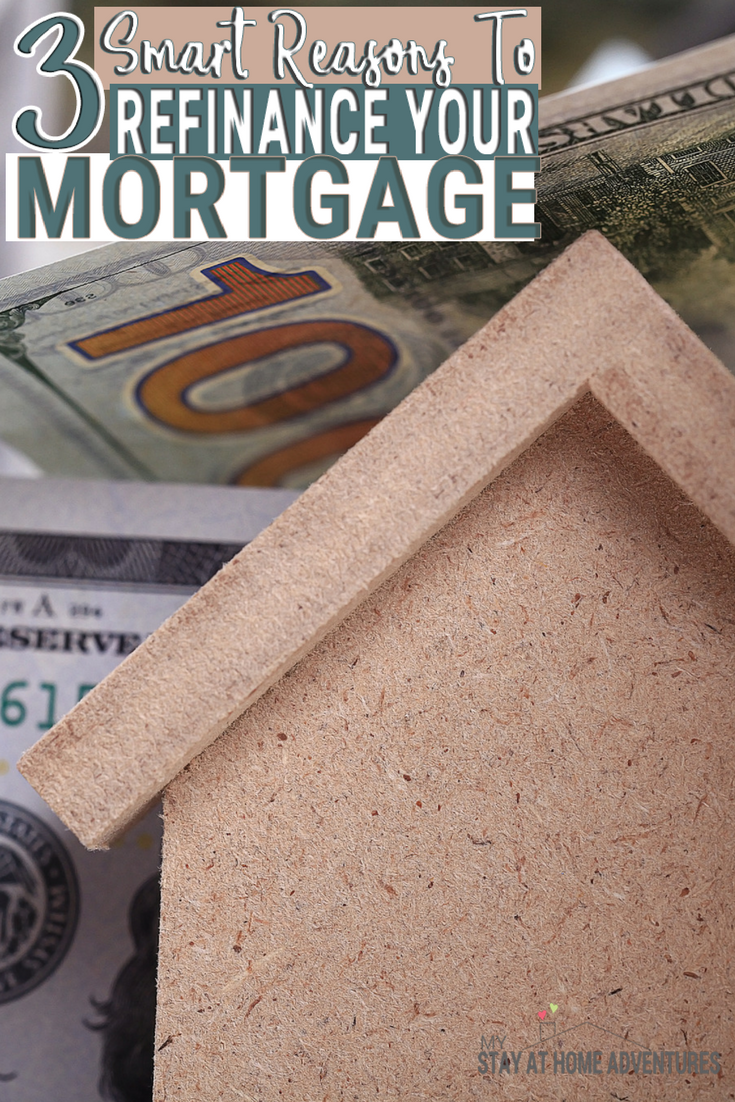3 Smart Reasons to Refinance Your Mortgage
This post may contain affiliate links which might earn us money. Please read my Disclosure and Privacy policies hereMortgage rates are on the rise every now & then. Refinancing your mortgage is a wise move if it reduces your mortgage payment, shortens the loan’s term or helps you to build equity quickly. Here arises an important question How to decide when to refinance your mortgage or is it even necessary? But before we jump on when & how, it is important to know what is refinancing your mortgage exactly.
 3 Smart Reasons to Refinance Your Mortgage
3 Smart Reasons to Refinance Your Mortgage
What is refinancing?
Refinancing a mortgage can be defined as paying off an existing loan and replacing it with a new loan.
There are 2 types of refinancing, namely:
- Cash-Out Refinance
- Rate-And-Term Refinance
The former type refers to taking out a mortgage for more than what you owed. You take the difference in the form of cash or sometimes used to pay off any existing debt. The later type simply means, to save money. In this, you can opt for refinancing the remaining balance for a lower interest rate for an affordable term. The term here refers to the number of years taken to repay the loan.
There are many reasons for refinancing a mortgage and few are listed below:
- To secure a lower interest rate
- To shorten the loan’s term
- To convert between adjustable-rate and fixed-rate mortgages
- To build equity and consolidate debts
#1 – Interest rates dropped
One of the most common reasons for homeowners to refinance their mortgage is to lower their interest rate. If you can even reduce your interest rate by 1 %, then refinancing is worth the price. The reduction in interest rate not only helps you to save money but it also increases the rate at which you build home equity and minimizes the monthly payment.
For instance: If you have fixed-rate mortgage with the following details:-
Term- 30 years, Interest rate 9%
Principal $100,000, Interest payment $804.62
The same loan at an interest of 6% reduces the payment to $599.55.
In the same way, you can use a mortgage calculator to get the details of your loan. This will help you in refinancing your mortgage and save some money. Before you opt for refinancing, it is important to refinance a mortgage based on today’s rate and not on future rates predictions. The future rates can be an uncertain factor to evaluate the mortgage rate and loan term.
Breakeven point:
One essential question that might keep your mind wandering is how much lower the interest rate should be, to justify refinancing. The best way is to do the math and it takes only 4 steps:
- Track down monthly saving in terms of interest (this number will go down as you pay your mortgage, but as an estimate, the 1st month's savings can be used, for a long-term mortgage);
- The smaller tax deduction can be adjusted when you reduce the interest savings by your marginal tax rate;
- Note down the total cost of refinancing your mortgage ( you can get this information from your bank or mortgage broker); and
- The total cost of the refinance divided by your monthly after-tax savings gives the result which is the breakeven point.
The breakeven point is nothing but the number of months. Refinancing is justified if you plan to stay in that home longer than the breakeven point. Here, you should keep a track on the cost of financing along with the interest rate.
#2 – To lower the monthly payment
You can opt for refinancing your mortgage to a term that’s longer than the residual mortgage term, just to lower your monthly payment and save some money for the future. Let us do a simple math to understand the benefit of extending the mortgage term:
Let us say you have taken a loan of $400,000 for a 30-year term at a 4% fixed rate mortgage, after ten years the amount left will be $352000. You will have to shell out $4000 a month. By refinancing the outstanding balance for another 30 year period, you will be paying $3520 per month which is less than $4000.
Check out these posts:
- 6 Tips For Keeping Your Home Clean After Spring Cleaning
- Spring Checklist: 7 Home Maintenance Tips
- 12 Environmentally Friendly Home Improvement Ideas for the Summer
You have added another 10 years back into the mortgage term to lower your monthly payments. This method of refinancing is not advisable as you will be paying more as interest. But this method will lower your monthly payments. This method is advisable if you want to lower your monthly payment and invest the savings in other plans.
#3 – Variable rate mortgage to fixed
The concept of refinancing will make sense when you convert your floating rate mortgage to fixed rate mortgage. When you foresee a rise, it is better to covert the variable to fixed rate mortgage. A bird in hand is worth two in the bush, the variable rate mortgage may rise or fall but the fixed rate will help you in maintaining the status quo. This will help you predicting the future investments and savings.
For me, I wouldn’t bet on rates staying low. If I have financed my home or car in a variable rate mortgage I would refinance fast. This can save me a lot of money and will give me a financial freedom to plan my future.
Summing Up
Refinancing is a choice and that choice has to be made at the right time to reap its benefits. It is always hard to predict the exact time for refinancing. Reason to refinance will decide the benefits we reap. The refinancing decisions should always be based on the present situation and not on future predictions. The present is what we have and the future is always uncertain. If I am you, I will always be on the lookout for the right reason and time to refinance my mortgages.
James Paul is a personal finance blogger who write at Basic Finance Care covering everything about personal finance management and frugal living.





